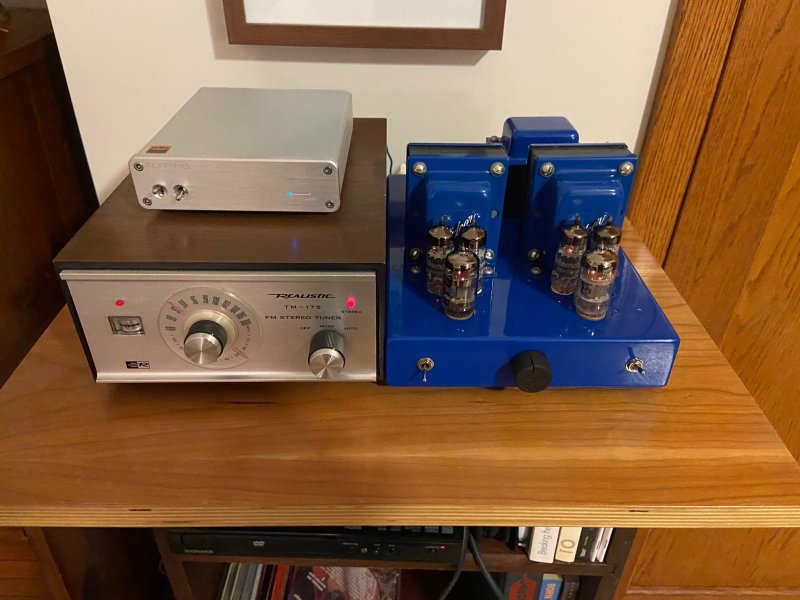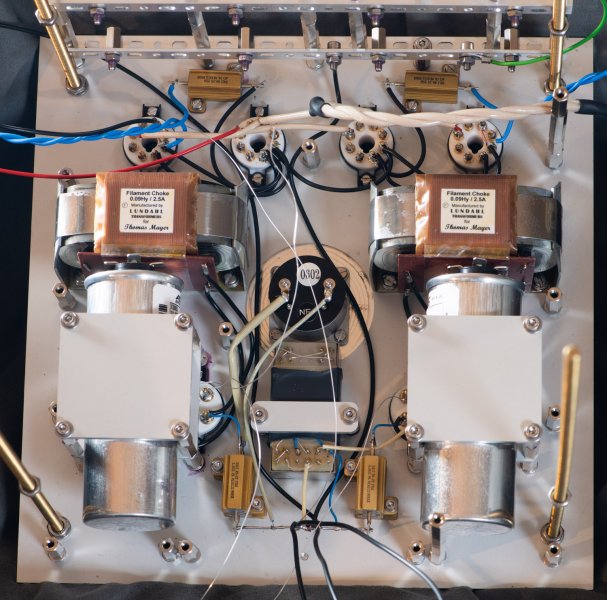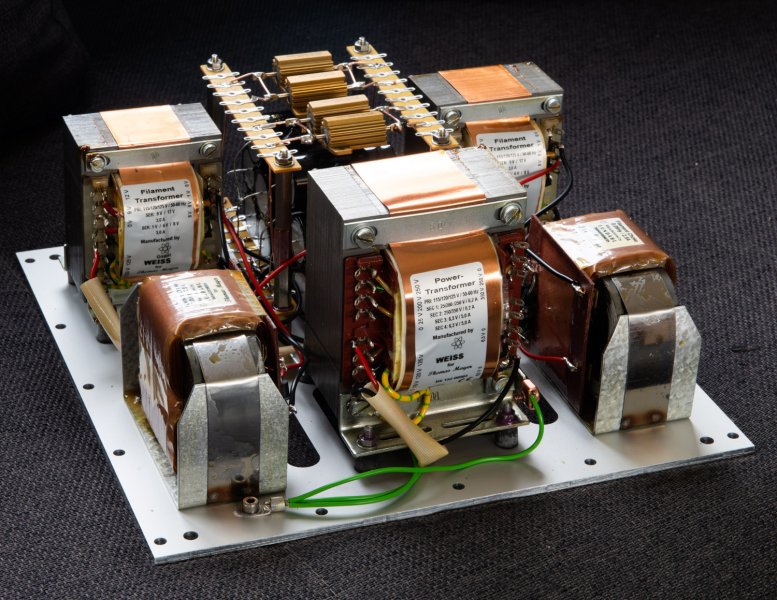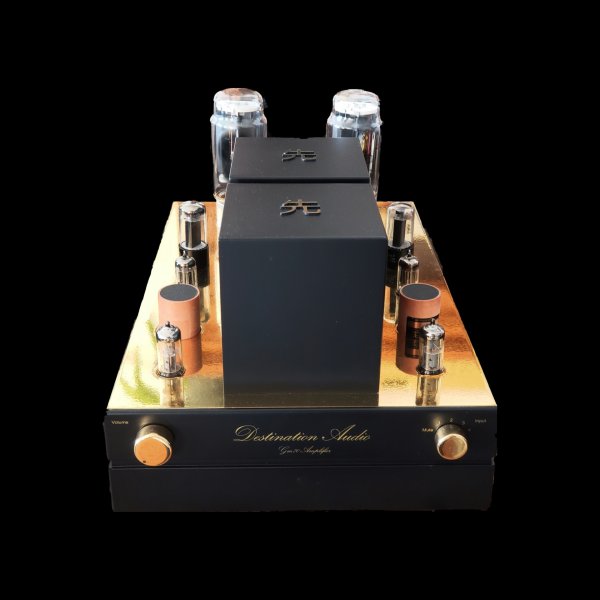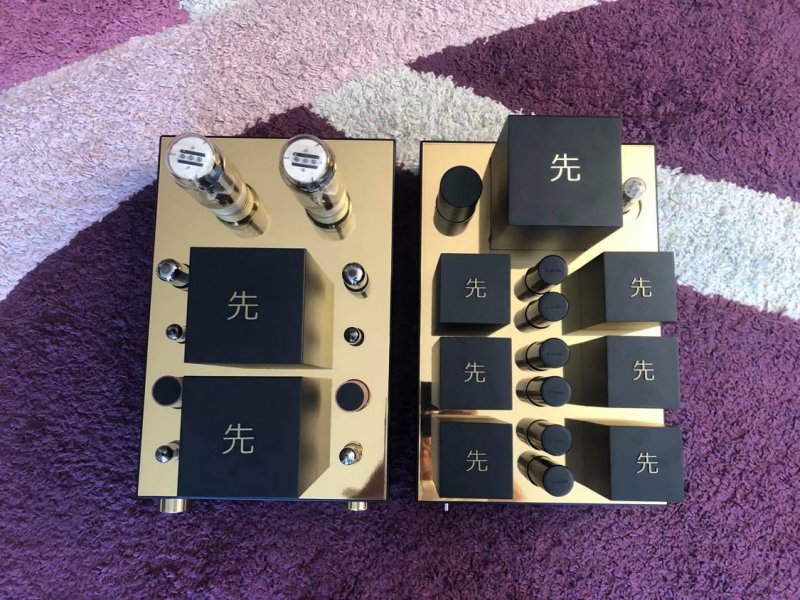I've been dabbling in low powered amplifiers for some time. My first foray was a type 45 based amp (allegedly built by Burgess). I played it on a set of Coral 8" full range drivers mounted in a cabinet using a passive 8" radiator made by Coral. It worked Ok but I felt I could do better.
I have a theory that most people running lower powered amps have not compared them directly to other amps on a level playing field. What I mean by this is that if you have an SET, where is the push-pull version of it that uses the same power tubes and similar construction? Or, where is the push-pull amp that makes the same power? Most of the comparisons I've seen are against amps of quite a lot more power! So I figured to eliminate that as a variable, as well as the type of tube, since most SETs use DHTs while the PP amp it gets compared to is often an indirectly heated pentode based design, probably using feedback and operating class AB. Apples and oranges.
So I ran a variety of experiments. The first was to create a type 45 based amp that was push pull instead of SET. The power went from 0.75 Watts to about 5 Watts, using a very conventional 1950s phase splitter. The result was instantly more transparent and smoother, easier to listen to at any power level.
(I also tried out a solid state amp that was single-ended right to the output stage. Because of its topology, it made a prodigious 2nd harmonic just like SETs do, and not surprisingly, was very smooth- until you pushed it harder at which point it got brighter. FWIW this is an amp I used to service back when I was putting myself though engineering school; I worked at the local Allied Radio Shack service center, which serviced the 5-state area of the Dakotas, Iowa, Wisconsin and Minnesota. The amp is the SA-175 and makes about 3 Watts at full power. For this test I refurbished it since no amp from that period will be working right if not serviced out.)
Finally I designed a tube amp that makes 5 Watts, based on the EL95. This is a 7-pin miniature pentode that caught my fancy when I serviced out an old Grundig console for a friend (BTW, consoles are back! see
https://wrensilva.com/collections/stereo-consoles sort of a hipster thing...) who lives in a condo. A pair of them makes 5 Watts in class A.
The EL95, like its bigger brother the 6AQ5, is meant to be
very easy to drive. I found that Edcor had a high end output transformer that had exactly the right plate load impedance I was looking for, in a 10Watt embodiment, which meant at full power the transformers would always be loafing. They had ultralinear taps too! What all this means is this allowed me to use a 12AT7 wired as a differential amplifier to drive the power tubes directly. No 'phase splitter' and the only gain driving the power tubes in the input circuit. Since the 12AT7 is quite linear, it also allowed me to run feedback. Normally I'm not a fan of feedback in tube amps since its often misapplied. But since this amplifier circuit was
entirely musical and listenable without any feedback, I knew that the linearity of the feedback node was not going to mess with the feedback signal too much. I also needed it because the amp had too much gain! So one grid of the 12AT7 was the input and the opposing grid was for the feedback, in a way that you often see in solid state amps.
I wanted this amp to be small, taking up no more room than the SA175 it was replacing. It has a volume control and 2 inputs so its really an integrated amp. Regardless compared to the type 45 it was really no contest- it was lower noise, audibly and measurably wider bandwidth (in both directions; full power to 100KHz), smoother and more transparent. Its footprint is the same as the SA175 so it can sit on a bit of notebook paper with room to spare. I am probably more enamored of this amp than i should be; it was insanely easy to design and worked perfectly as soon as it was powered up. I made it of decent parts but its nothing special in that regard. Its simply works because it has the right distortion profile.
SETs have what is called a 'quadratic non-linearity' that results in a prodigious 2nd harmonic. The 3rd is fairly prominent too by not nearly that of the 2nd. Together they imbue the amp with 'warmth' and mask the higher ordered harmonics which would otherwise cause harshness. So they come off nice and smooth. But since they lack feedback, by about 20% of full power the higher ordered harmonics come out to play, particularly on transients, which, since the ear also uses them to sense sound pressure, causes the amp to sound 'dynamic'. This is caused entirely by distortion and how it interacts with the ear.
When the circuit is fully differential you have a 'cubic non-linearity'. This is because even ordered harmonics are cancelled from one stage to the next. This cancellation means that distortion is not compounded as much as the signal moves through the amp. The result is a 3rd harmonic (at a slightly lower level than seen in an SET) with succeeding harmonics falling off on an exponential curve but at a faster rate than quadratic, resulting in less overall distortion and also masked higher orders. So it too is musical, but is more transparent owing to less overall distortion. There is a greater amount of usable power also owing to the lower distortion (the difference at full power is about 10:1 between the typical SET and typical fully differential amp).
So its not really a surprise that the little EL95 amp did so well. Math after all governs how all amplifiers work. Its nice though when you have the result verify what the math is saying.
